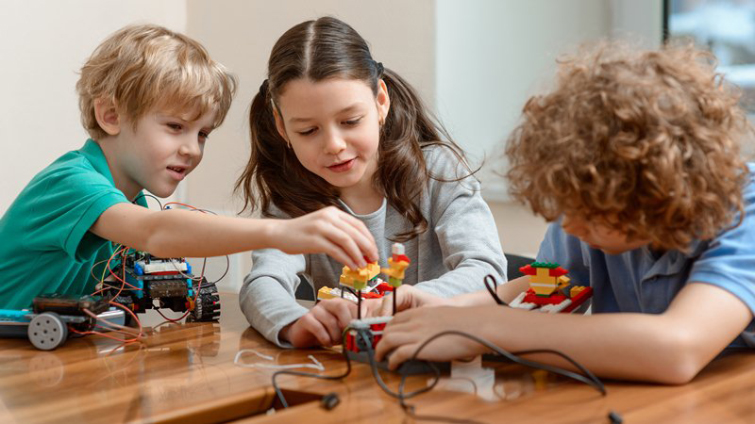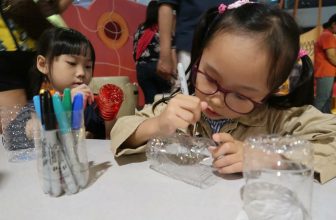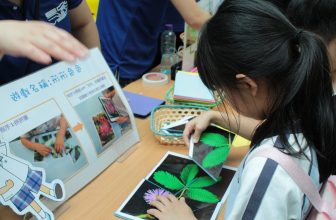
The United States is preparing to train 100,000 outstanding STEM teachers within 10 years, and increase 1 million community colleges and university graduates majoring in STEM fields. What preparations should it make to invest in STEAM and STEM education?
STEM education is completely different from traditional education systems and systems, whether it is early deployment or technological integration. With the addition of A and STEAM in the field of art, the difficulty is even higher. How to reverse the original education system and education methods, and integrate different subjects?
STEM education in the United States has been regarded as a policy and talent investment that is critical to the country’s future competitiveness. In the United States, the department that wants to promote and unify STEM is not only the Ministry of Education, but the White House, which integrates and focuses the resources and directions of relevant ministries.
STEM is the abbreviation of Science, Technology, Engineering and Math. As the name suggests, it is an emerging education topic that combines the four professional fields of science, technology, engineering and mathematics. From the actions of the US government, we can see that education policy is closely related to “national competition.” It is not just a slogan, but related ministries and committees must discuss together the government actions to implement the plan.
How to implement it?
1. Set precise goals
Taking the United States as an example, Obama clearly pointed out that in the United States, the performance of students in these areas is not good enough. According to the Program for International Student Assessment (PISA, The Programme for International Student Assessment), the United States has consistently ranked in the middle of the country in terms of math and science performance over the years. When Obama proposed a plan to strengthen STEM education, he hoped that American students’ achievements in mathematics and science would move from the middle class to the first class.
They realize that there are not enough teachers in this area, so they need to train 100,000 outstanding STEM teachers in 10 years, and add 1 million community colleges and university graduates majoring in STEM fields.
In addition to counting numbers, students must also see that this is an indispensable foundation for changing the world in the future. Teachers must be able to inspire students to realize their full potential.
They are very pragmatic and know that if they want to achieve this goal, they must face up to the contact and insufficient resources of certain ethnic groups in these areas. For example, women, Hispanics and African Americans, first-generation immigrants to the United States, and people with disabilities, all need to increase their chances of receiving STEM education.
2. Integrate resources and aim at targets
Once you have a goal, you must integrate resources and prescribe the right medicine.
The Obama administration directly established the STEM Education Committee ( NSTC Committee on Science, Technology, Engineering, and Math Education ) in the White House in 2011, which includes 13 institutions, including almost all science and technology units, the Ministry of Education, and even the country. The Science Foundation, NASA, break the boundaries of science and integrate the power of inter-ministerial meetings. This level and organization ensures that everyone will not play football with each other or that there is no real person responsible.
In order to prevent everyone from bottling old wine in new bottles, the federal government has given a new budget to strengthen STEM education at all levels of schools, increase public education, and plans for future workplace education. In addition, the Ministry of Education, the National Science Foundation, and the Smithsonian Institution, which is composed of museums and research institutions, are directly designated to promote STEM including women, minorities, and disadvantaged groups.
3. Train teachers and give resources to encourage cross-disciplinary cooperation
The first scene of flipped education is in the school, and ultimately depends on the teacher to implement it, so they also educate the teacher and give incentives to innovate at the same time. In addition to granting funds for teachers to study in STEM-related fields, many institutions also organize teacher lesson plan competitions and launch audio-visual courses to encourage everyone to be creative, have the courage to share and communicate, and create teaching materials for students. For example, in the Teacher and School Leader, TSL, Incentive Program competition (Teacher and School Leader, TSL, Incentive Program competition), in the 2017 school year that just ended, a total of more than 88 million U.S. dollars was issued, and a total of 285 million U.S. dollars was promised to apply for proposals, Or the school district office or school that won the prize.
This allows many teachers to have more resources and inspiration to move together, break through the original subject limits, or cooperate with teachers in other subjects. For example, in Andover Middle School in Virginia, when math teachers are teaching geometry, they cooperate with art teachers and take students to the art gallery to see and even verify the concept of geometry in the artwork. In science and engineering courses, models are also used, including sketches, diagrams, mathematical formulas, and data collection, to make speculations, design models, predict possible results, and continue to modify models. “The point is, the math teacher went to the art teacher and said we could do it together,” said Babette Allina, who promoted STEAM at the Rhode Island School of Design.
In addition to on-the-job training and workshops, there are also educational research institutes of many universities, which also offer STEAM, STEM training, and degree courses, such as the University of San Diego and Concordia University Portland (Concordia University- Portland), etc., to cultivate relevant teachers and research.
4. STEM and STEAM not only happen in schools
Learning is not limited to campuses. All social education institutions have also mobilized with the government to launch various plans. The institutions participating in these projects include various social education, research institutions, and non-profit organizations of the federal and state governments.
For example, the 21st Century Community Learning Centers of the Ministry of Education, together with NASA, national park management organizations, museums and library service agencies, jointly launched courses and activities for low-income, high-demand schools and students. Even when they leave the campus, they can receive STEM education in nearby libraries, museums and other places. Hispanic-Serving Institutions also cooperated to launch STEM projects to help more Hispanic students obtain higher education degrees in the STEM field. There are also many STEAM-related courses in the adult continuing education and student summer courses offered by community colleges and school district offices everywhere.
For example, starting from the education system to influence parents and families. In Taiwan, when school starts, students often bring back a stack of forms and ask parents to fill in similar information repeatedly. However, in the United States, parents only need to fill in the information once on the Internet, and when more than one child goes to the same school or the same child goes to a different school year, they do not need to fill in the same content repeatedly. Whether it is for doctor visits, shopping, restaurant reservations, and public services, Internet appointments, e-mail notifications, and electronic receipts are also used extensively. For people who do not have computers at home or are unfamiliar with these skills, there are free computers or courses to teach these skills in libraries, community activities, and local government offices.
More broadly, American society has reached a consensus that to improve the digital IQ and technological literacy of the whole people, the ability to use digital tools is needed in life and used in all public and commercial services.
2018.08.28 (Update 2018.11.16)
by Huang Dunqing (Parent-Child World) [Taiwan]
Source of reference: Parent-child world [Taiwan]





